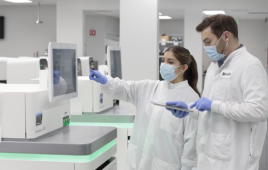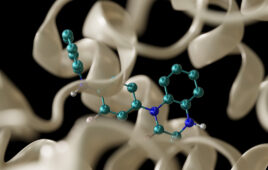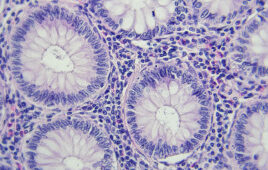 A new study led by scientists at The Scripps Research Institute (TSRI) suggests that cells construct protein “clumps” to protect against neurodegenerative diseases such as amyotrophic lateral sclerosis, a.k.a. ALS or Lou Gehrig’s disease.
A new study led by scientists at The Scripps Research Institute (TSRI) suggests that cells construct protein “clumps” to protect against neurodegenerative diseases such as amyotrophic lateral sclerosis, a.k.a. ALS or Lou Gehrig’s disease.For the first time, researchers found that a specific enzyme can “tag” certain types of abnormal proteins to send them to join clumps, where they may be less toxic to the cell.
“We have uncovered a new molecular mechanism underlying neurodegeneration,” said Claudio Joazeiro, associate professor of cell and molecular biology at TSRI and senior author of the new study. “This could lead to new diagnostics or new therapeutic approaches, especially for ALS.”
The study, which was published recently in the journal eLife, provides a new perspective on the role of protein clumps, which have long been associated with some types of neurological diseases.
How to Catch Dangerous Proteins
Cells are made of millions of proteins that perform the essential functions of life. With so many players in a cell, it’s easy to imagine that things sometimes go wrong.
In ALS, genetic mutations can cause nerve cells to accumulate abnormal proteins and eventually die, leading to symptoms such as muscle weakness and paralysis.
To develop a treatment for ALS, researchers have been investigating the cell’s ability to identify and destroy abnormal proteins before it’s too late. In 2009, a study by Joazeiro and his colleague Steve Kay, now president of TSRI, reported that mutations in an enzyme called Listerin (Ltn1) cause ALS-like symptoms in mice. Then, in 2010, a study by Joazeiro and Mario Bengtson, a former postdoctoral researcher at TSRI and now assistant professor at the University of São Paulo, Brazil, discovered that Ltn1 can identify abnormal proteins that have become “jammed” in the ribosome, the cellular structure that assembles new proteins.
“In a sea of normal proteins, these enzymes are able to identify which ones are potentially toxic,” said Joazeiro.
While Ltn1 tags abnormal proteins in the ribosome for destruction, for some reason it does not catch all of them. This led the researchers to believe that another enzyme in the cell’s larger ribosome-associated quality control complex might be important for catching other ne’er-do-wells.
Clumps May Act Like Traps
Using yeast cells and techniques in molecular genetics, biochemistry and cell fluorescence, the team found that another ribosome-associated quality control complex subunit, called Rqc2, swoops in to “tag” abnormal proteins Ltn1 misses. However, when tagged in this alternate way, rather than being immediately targeted for destruction, the proteins form clumps or aggregates.
“This is the first evidence that proteins are tagged for aggregation,” said TSRI Research Associate Ryo Yonashiro, who was co-first author of the study with Erich B. Tahara, formerly of TSRI and now at the Federal University of Minas Gerais in Brazil.
The researchers think the clumps may act like traps to keep individual abnormal proteins from interfering with normal proteins. Proteins collected in clumps might also be easier for a cell to destroy.
The new findings help explain why mice known to have mutations in the genes that encode the ribosome-associated quality control complex also show ALS-like symptoms as they age. These mice may simply lack the enzymes needed to maintain adequate protein quality control. In one scenario, mutations in the complex preventing protective clumps from being formed might be toxic. In another, mutations resulting in too many clumps could be detrimental as well.
“Because we all have these enzymes we have been studying, we think it’s very likely that this process is going to be relevant in human diseases as well,” Joazeiro said.
The researchers plan to investigate further the role of protein aggregates and the molecular mechanisms that lead to ALS.
Source: The Scripps Research Institute
Filed Under: Genomics/Proteomics



